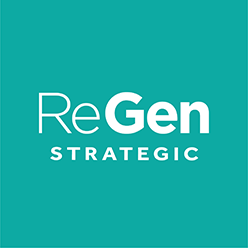One of the most memorable moments from this year’s state election campaign for me was the reaction to Premier Mark McGowan’s answer on vision.
During the leaders’ debate, the Premier was asked about his vision for WA. In response, he talked about a recently announced initiative to manufacture components for iron ore rail cars in WA.
Some observers found that answer underwhelming, but in the wake of the election result, I think it’s worth another, closer look.
Vision is an undefined quality in politics. To some, vision means soaring Obama-style oratory. To others, vision means big, sometimes unexpected, announcements.
In WA, the developments you hear most commonly talked about as visionary are the Fremantle Harbour, the Goldfields pipeline and the North West Shelf development. A small, but increasing, number of people also talk of the Barnett government’s stadium development in this way.
What these projects have in common, in addition to being expensive and contentious in their day, is that they went on to underpin significant, long-term economic opportunities for the state.
Which brings me back to the Premier’s comments on rail component manufacturing for the resources sector.
On its own, this might appear narrow to some. But, when considered alongside Rita Saffioti’s achievement in securing the local manufacturing of METRONET rail cars in WA, and the enormous size of the iron ore rail car fleet that needs servicing (32,000 rail cars annually), we may be on the cusp of a whole new industry for WA.
Every focus group I’ve had a hand in over the past 15 years has had respondents screaming about the need for more manufacturing in WA, with those old enough lamenting the closure of the Midland rail yards in the 90s.
The current government’s achievements and commitments on rail manufacturing, its progress in developing new advanced manufacturing hubs in Kwinana and the South West, as well as the announcement of big incentives for manufacturers during the election campaign, point to a very solid direction. Add recent commitments to manufacture 1,000 standalone power systems for remote communities and cash incentives to meet the expected boom in local wind turbine demand locally, and the direction is clear.
McGowan Labor has a vision. A manufacturing vision.
Of course, some will say we can’t manufacture things in WA… our wages are too high. However, many believe the time is right. Modern manufacturing technology, a narrowing of the international gap in wage levels, plus the increased value being placed on sovereign capability post-COVID are levelling the playing field.
For years, WA has been manufacturing high quality, cost-competitive marine vessels for a global market. If we can do this, many within industry, government and the union movement believe we can do more.
Which is how we arrived at the announcement on local iron ore rail car component manufacturing.
In the last week of the election campaign, CGM commissioned our own poll of Perth voters to get a sense of what was driving voter behaviour.
A key finding was that more than three quarters of voters thought Mark McGowan and Labor had the best vision for WA’s future, compared to only 12 per cent for the Liberals.
The Premier’s previous performance on COVID clearly played its part in Labor’s extraordinary electoral success.
But the punters clearly liked the version of the future Mr McGowan was selling, also.
There’s no doubt in my mind Labor’s direction on manufacturing is central to this appeal. And, if the Premier, aided by Ms Saffioti and his Deputy Roger Cook, in his new capacity as Minister for Jobs, can deliver on their manufacturing commitments, they will be rewarded with long-term political support from the working people in WA’s suburbs and regions.
For all the projects we now consider visionary in WA, there were many sceptics in their inception, with it taking some time for consensus to settle.
I think Labor is on to something good here. So, let’s make a diary note to revisit the vision conversation down the track.
 ReGen Strategic
ReGen Strategic